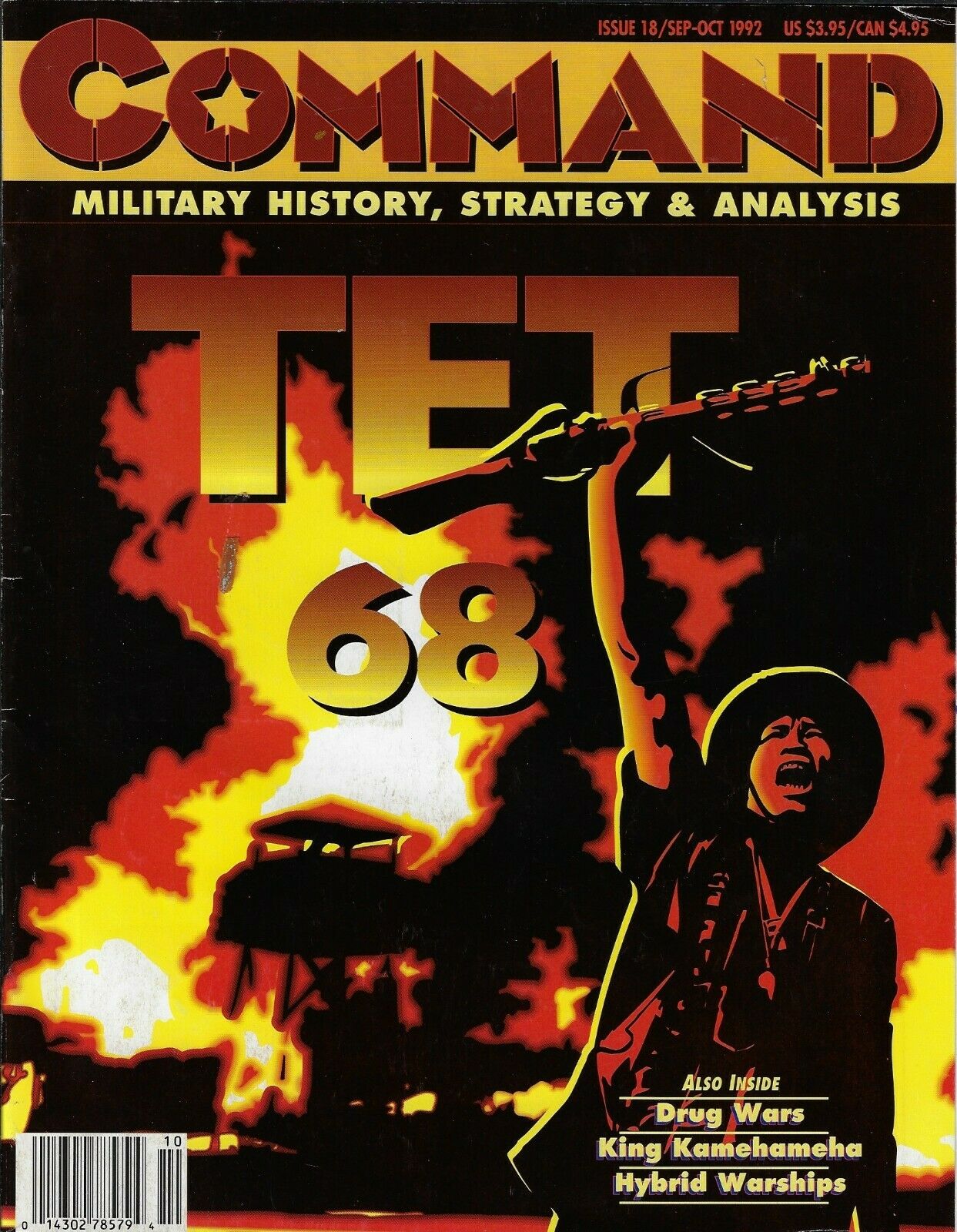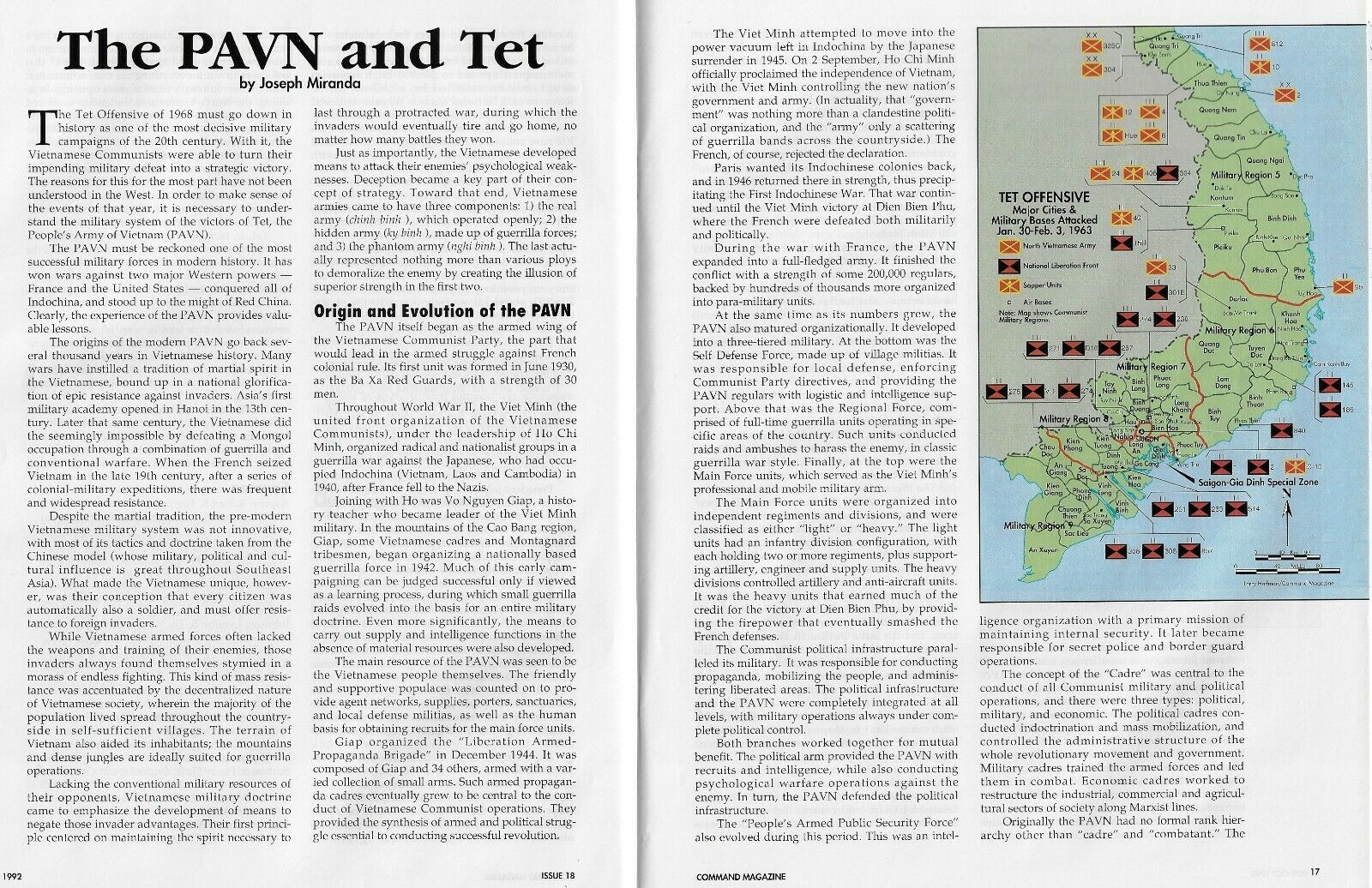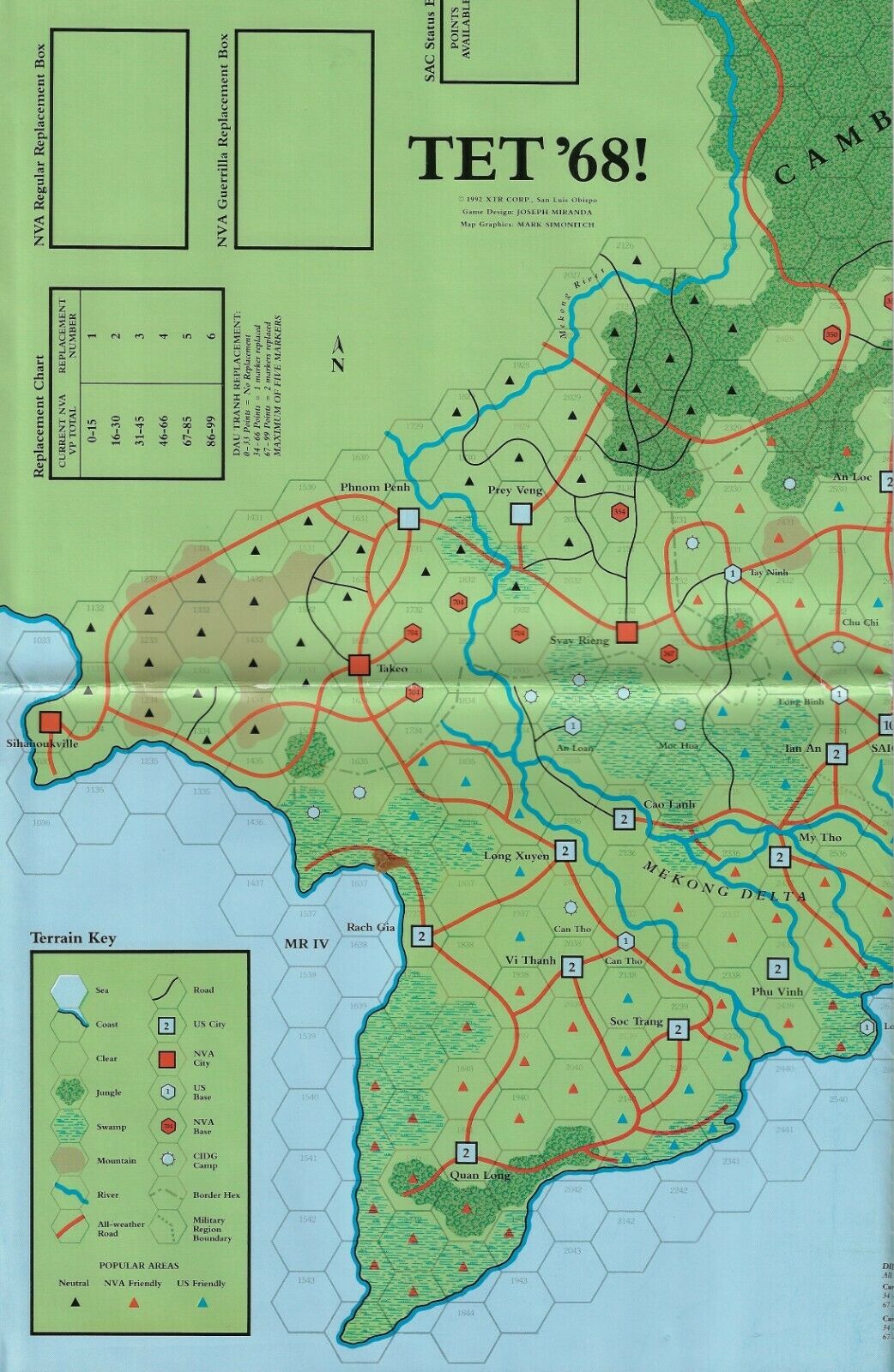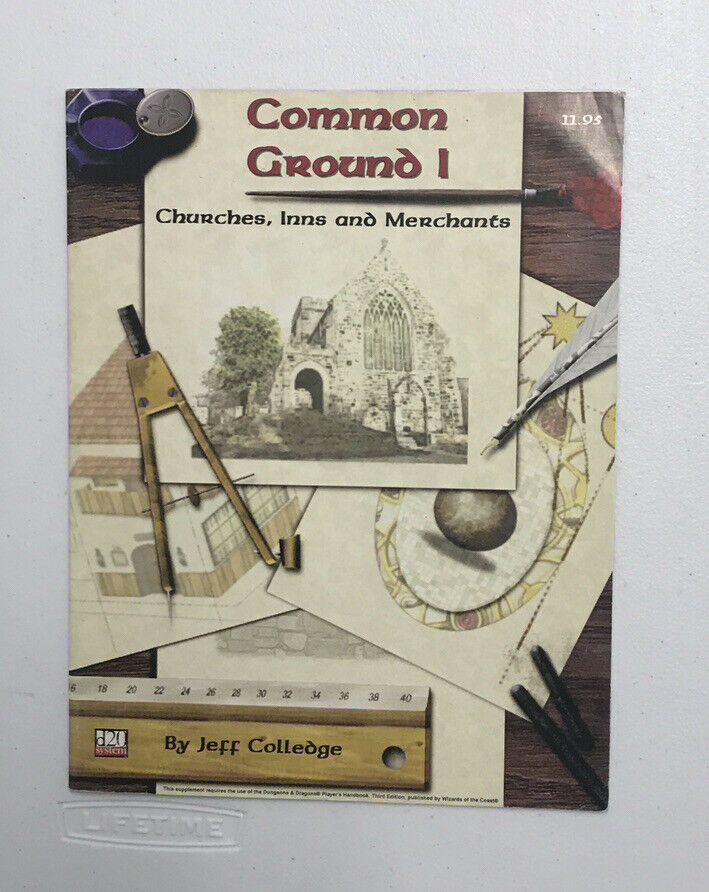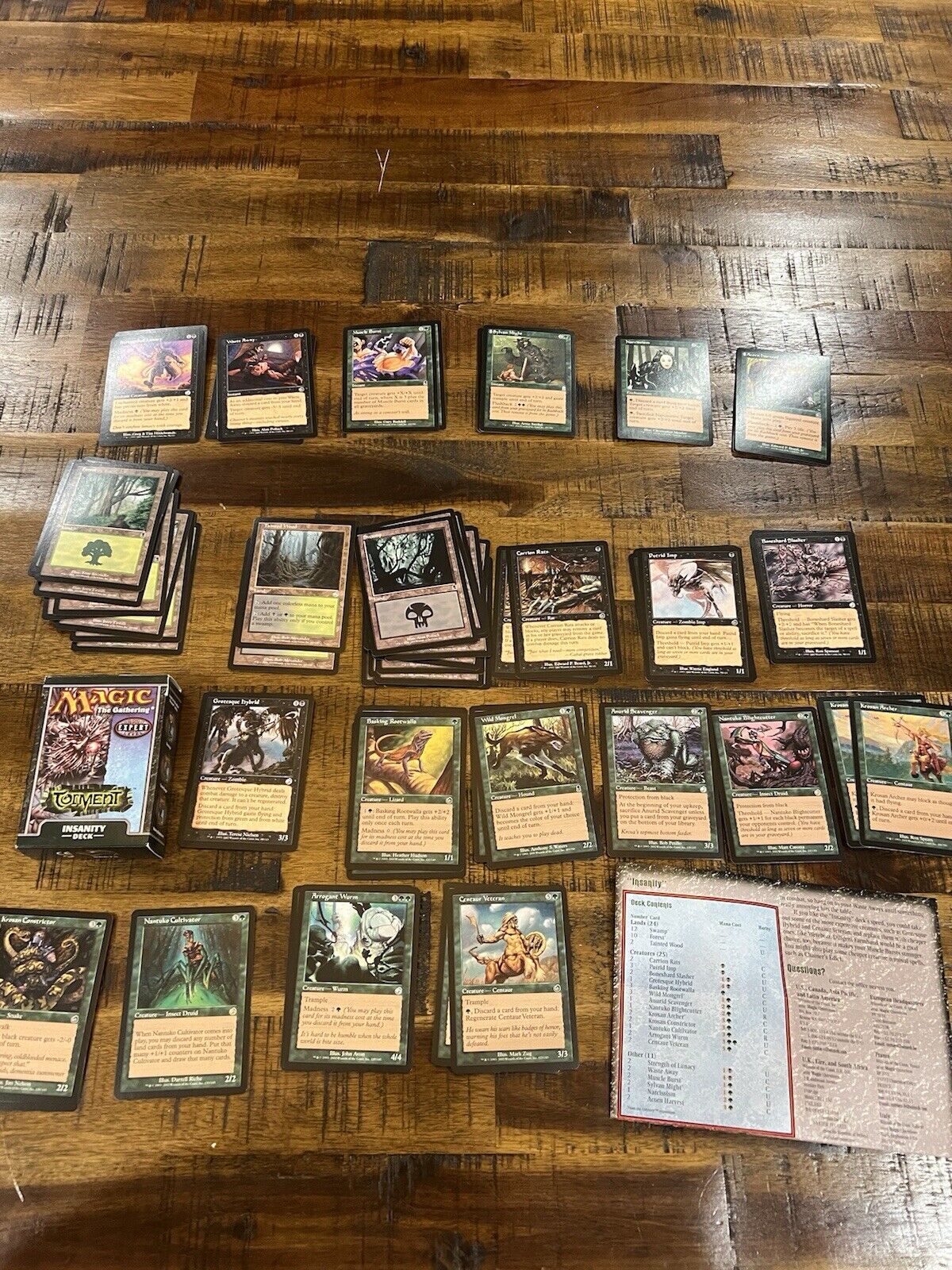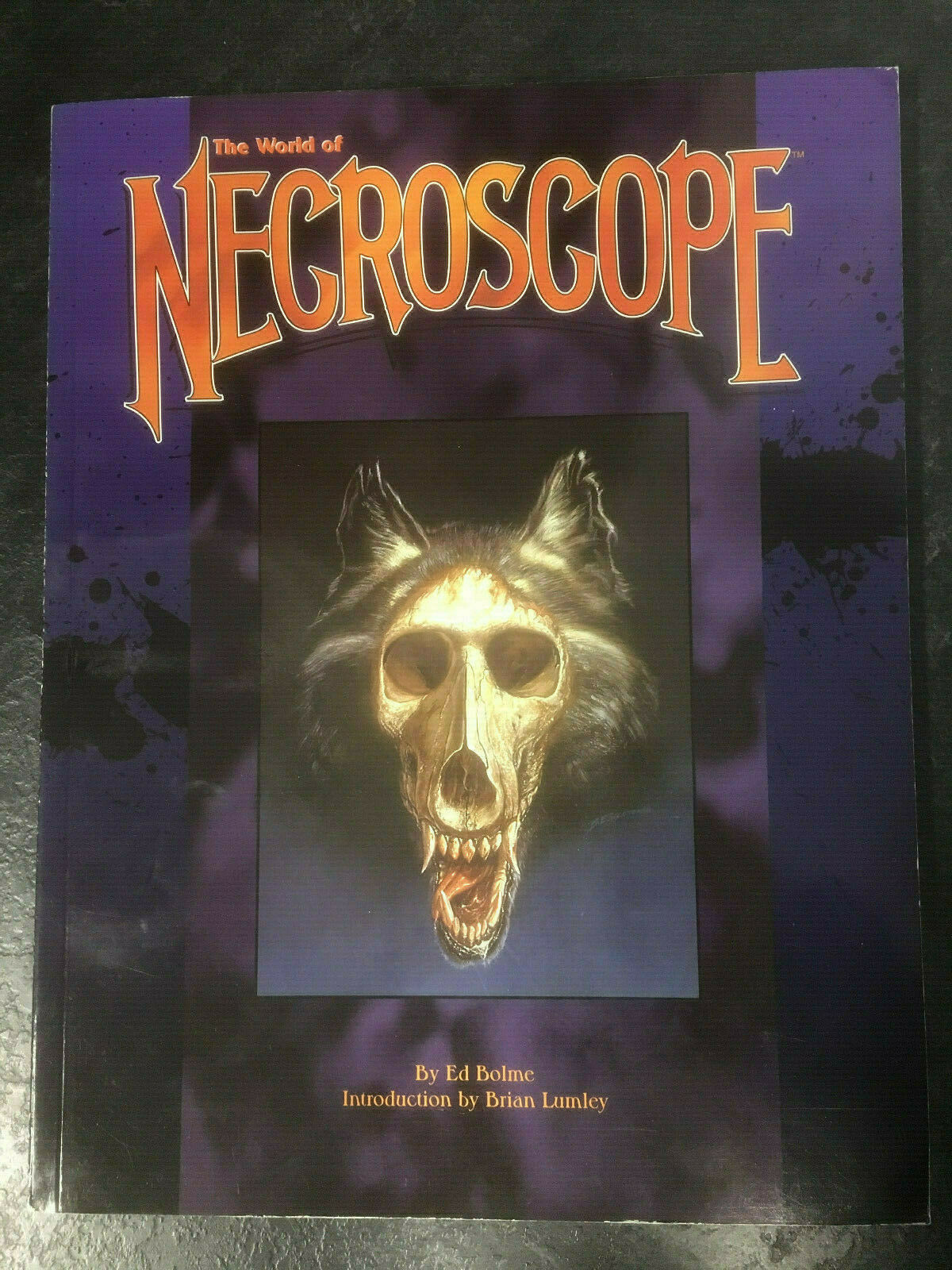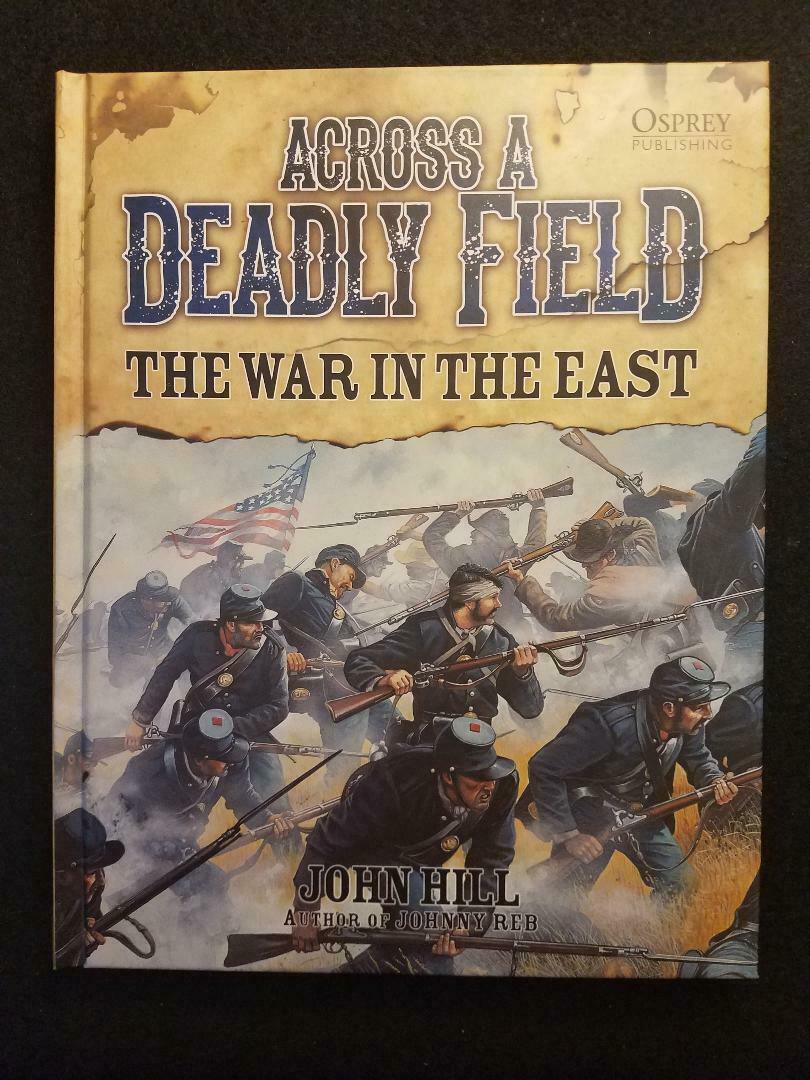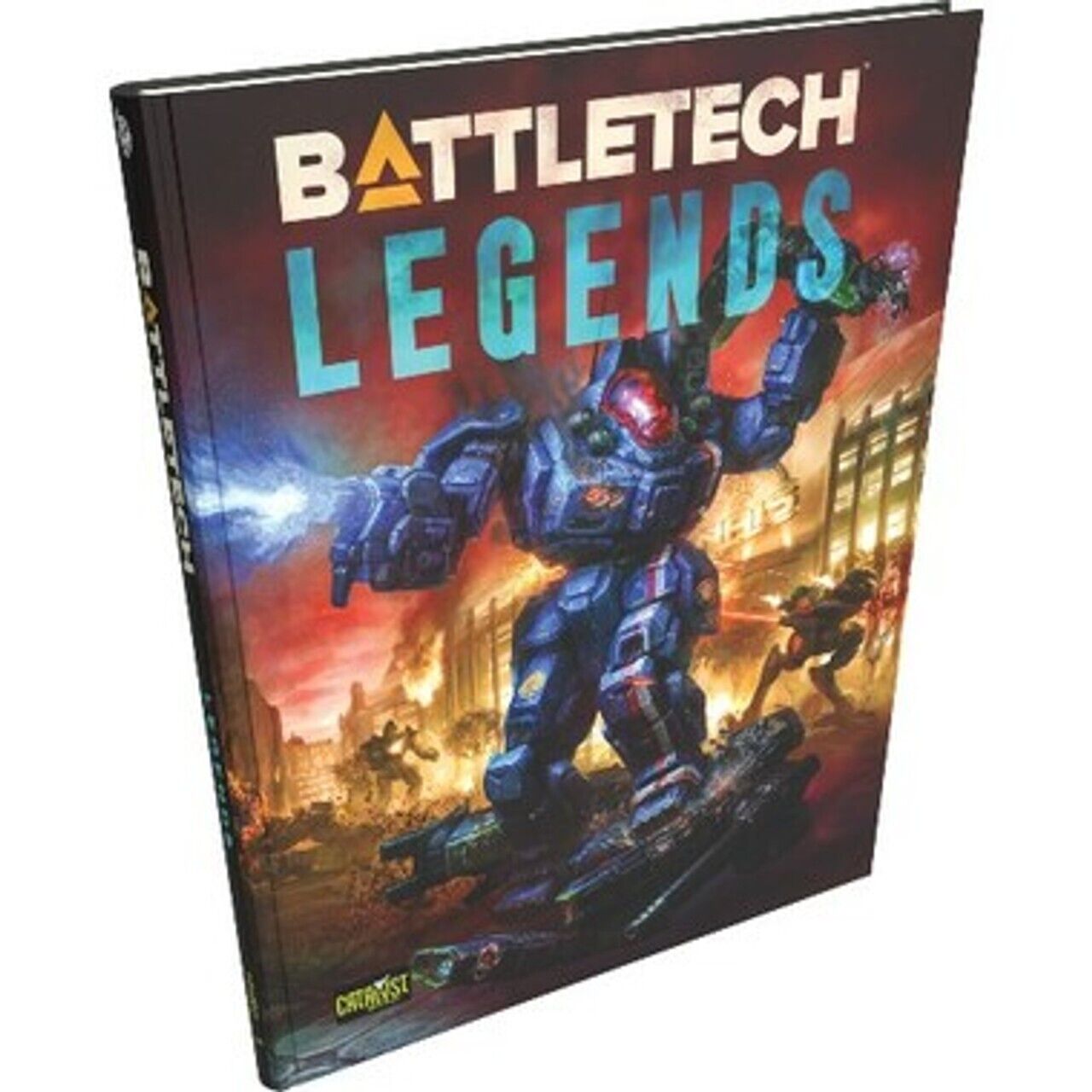-40%
Command Magazine #18 Tet '68 - Offensive in Vietnam 1968 Unpunched FS
$ 19.95
- Description
- Size Guide
Description
Command Magazine #18Tet ‘68
Tet `68 is a simulation of the 1968 Tet Offensive in Vietnam. The objective of the game is to show what happened during the campaign, how the U.S. and its allies, despite winning a military victory, were defeated psychologically and politically.
Victory is awarded based on points, which are earned in different ways for the Communist and U.S. players. Communist points are scored for political successes; U.S. points are primarily scored for military objectives. At the end of 7 game turns, the player with the highest victory point total is the winner.
From a Review by Seth Owen:
Tet 68 is closer to the S&T philosophy than most Command games, which is not surprising, considering that the game's designer, Joe Miranda, designed many games for S&T and eventually became its editor. Miranda's designs are notable for paying a lot of attention to the political aspects of warfare, and Tet 68 is no exception. Players who bring a "panzer-pushing" mindset will find themselves losing in spectacular fashion, especially as the Communist side. But even US/ARVN players are cautioned that a purely military approach will not bring victory in this game, which covers the decisive 1968 Communist offensive. While a failure militarily, the Communist offensive's political impact was wide and deep and set the stage for their eventual victory.
Each hex is about 25 miles across and the map covers all South Vietnam and southern Laos, and parts of Cambodia, Thailand and North Vietnam. It shows a wide variety of natural and man-made terrain, including jungles, swamps, mountains, cities, towns, camps, roads, bases and rivers. One unusual terrain feature is "popular areas" which represent rural regions that were friendly to one side or the other. Concentrated in the southern part of South Vietnam, they play a large part in the political warfare of the game.
Units are divisions and brigades/regiments. US divisions have two steps while other units have just one. Some of the unusual units that appear include military police, psychological warfare units and various kinds of special forces.
All the Communist units are one-step, with the other side using a yellow or black star to show the Communists in "underground" mode. A few US side units also have this ability.
This "underground" mode is the key design element of the game, as it allows guerilla units to be hidden, and makes them immune from attack except under certain conditions.
Victory is measures by victory points, with both sides amassing their totals separately (one side's gain is not the other side's loss, directly). The Communist player gets points for attacking American units, holding cities and bases. The American side scores points for eliminating Communist units. Both sides can gain or lose points for political combat and collateral damage.
Game Components:
Rules (16pp as part of the Game Insert Booklet)
200 12mm die cut counters
One 22” X 34” full color map
including rules for intelligence, logistics, and weather
Game Variants
Two Scenarios
Each Hex is 25 miles across
Game Turns represent 1 Week of real time
Units Represent Divisions (or “Fronts”); Brigade (or “Grop), with Regiments and Battalions:
Designed by: Joseph Miranda
Developed by: Peter Dangel
Game Supplement Contents
Issue Game: Tet ‘68
(by Joseph A. Miranda)
D-Elim
- Player’s Notes for Tet ‘68:
(Includes; The Communist Player; US Player)
Errata
(Errata, clarifications and additions. Includes:
Gettysburg
(Command #17)
Variant
(additions and extras. Includes:
The Allied Offensive: 1918: Storm in the West
(A short Campaign Scenario for 1918 from Command #16)
Commander’s Call
(News and views of what is happening with Command Magazine Games by Ty Bomba.
Includes: Ziplocs return; Progress in the works Dept; Game Descriptions of upcoming issues; Feedback Loop Analysis Issue 14 & 16; New Game Proposals; Monster Game Survey)
Departments:
--- Classified Ads & Conventions
:
Magazine Contents
Tet ’68: Myths and Realities of the Tet Offensive
(Historical Article by James P. Werbaneth. Includes: Warnings; Military Intelligence & Wargames; North Vietnamese group think; The Attack; Saigon; I Corps; America Deceived – Washington Unnerved; Changing of the Guard; Conclusions
Maps:
Major Battles : Tet 1968
Sub Articles:
Tet ‘68/LA ‘92)
The PAVN and Tet: The Armies of Tet
(Historical Article by Joseph Miranda. Includes: Origins and Evolution of the PAVN (People’s Army of Vietnam); Doctrine; Tactics/Strategy; Tet and Its Aftermath; Conclusions
Maps:
Tet Offensive: Major Cities & Military Bases Attacked; Locations of Major US and Allied Combat Units in Vietnam: December 1967
Sub Articles:
Higher US Command Structure in Vietnam; MACV Studies & Operations Group’ The US Army in Vietnam During Tet; US Army Divisional Organization in Vietnam; US Ranger Infantry Company; US Infantry Battalion Organization in Vietnam; US 5th Special Forces Group (Airborne); 5th Special Forces (Airborne) Mobile Strike Force; The Army of the Republic of Vietnam (ARVN); ARVN Infantry Divisions; RVN National Police; Free World Allies in Vietnam (Republic of Korea (ROK); Australia; New Zealand; The Philippines; Thailand)
Organization Charts:
PAVN/PLAF Main Force Division Structure; Viet Cong (PLAF) Main Force Infantry Battalion; Communist Sapper Battalion )
King Kamehameha: The Napoleon of Hawaii
(Historical Article by Michael Antonucci. Includes: A Time of Conquest; The Education of a Warrior-King; The Iao Valley Campaign; The Koa-papa Pali Campaign; Battle of the Red-Mouthed Gun; Preliminaries to the Final Campaign; Kaiana’s Treason and the Invasion of Oahu; Bits and Pieces; Conclusions
Maps:
The Island of Maui: Iao Valley Campaign; The Islan of Oahu: Nuuanu Pali Campaign
Sub Articles:
Dramatis Personae; A Hawaiian Chronology)
Drug Wars: The Pentagon’s Efforts in the War on Drugs
(Historical Article by Marty Kufus. Includes: A Long-Term Battle; Money in the War Chest; A Cornucopia of Drugs; SOUTHCOM in the New World Order; The War’s Southern Front; Central, Border and Domestic Fronts; Four Objectives; Double Your Money’s Worth; Gunfight in Southern Arizona; Finding the Needle in the Haystack; Who is Winning
Maps:
The Drug War: Fronts
Sub Articles:
“Friendly fire” in the Drug War
Organization Charts:
Southern Command; Bolivia Army; Peru Army; Colombia Army)
The Israelites in Canaan: Early Examples of Deception and Ruse in Warfare
(Historical Article by Jim Bloom. Includes: The Imbalance of Forces; Prelude at Jericho; Champaign for Ai; Filling in the Blanks: Canaanite Strength and Order of Battle; Filling in the Blanks: The Hebrew Strength; Military Themes in Biblical History
Maps:
The Israelite Invasion of Canaan; the Israelite Sack of Ai)
9141 German Army/1944-45 US Army
(A comparative analysis of Two Forces in Their Primes. Historical Article by John Desch. Includes: German soldiers and Units; The American Situation; Leadership; German Doctrine; US Doctrine; Weapons and Logistics; conclusions
Sub Articles:
Graduate School in Hell: The American Experience in Normandy
Organization Charts:
German Army Divisional Order of Battle as of 3 September 1941; US Army divisional Order of Battle as of 7 May 1945 (for ETO (European Theatre of Operations), MTO (Mediterranean) and Pacific) ))
Six of One, Half-a-Dozen of the Other: Hybrid Warships of the 20th Century
(Historical Article by Russ Jennings. Includes: The Germans; The Japanese; Others in World War II; Flight Deck Cruisers Revive; Postscript
Sub Articles:
French Aircraft Carriers in World War II
Tables:
French Aircraft Carrier Conversions; French Joffre Class Aircraft Carriers )
Great Britain as (Faltering) Superpower
(Britain’s Decline as a Superpower, 1919-39. Historical Article by D. David & J Dingeman. Includes: Background; The Ten Year Rule; Ruling the Waves; The RAF Scouts the Future; Air Police of the Empire; The uncertain Army; Real Soldiering; Regiments; The Locarno Treaties; Evolving Armor; Years of Neglect; The Outcome
Maps:
The British Empire in 1938; The Middle East, 1919-1945)
I Remember - At War on the Texas
(Memories of the USS Texas battleship. Historical Article by Walter Pitts, as told to Susan R. Middaugh.)
Unit Symbols
(How to read and understand Unit symbols used on maps and TO&E (Table of Organization & Equipment or OB (Order of Battle))
Short Rounds
(Short Articles on Interesting Stuff. Includes:
Historical Perspective: Swiss Involvement in World War II (includes Swiss Army TO&E)
Humor: Fighting Americans
Technology Backdate: The First Flamethrower )
Departments:
--- Editorial
: (by Ty Bomba. Featuring Issue feedback and Vietnam- The Era Next Door.)
--- Command Reader Survey
Command Magazine was sold on news-stands as a History, Strategy & Analysis Magazine. It was also sold combined as a Magazine/Game combination.
This is a good shape copy that may have a bit staple rust and some light cover or edge wear. The Magazine issue shows a bit of reading wear, is clean inside, unmarked and guaranteed complete. The game is unpunched and un-played.
.
XTRCOM18 Sept-Oct 1992 80pp + 28 pp, map, counter sheet
There is no charge to ship this item to a domestic US address via Media Mail. We must caution that Media Mail is very slow and can take 2-5 weeks to reach you (despite what the post office ‘claims’ is their normal delivery with this service). We always send tracking numbers if they are available when we generate your shipping label.
All other shipping (including Foreign) is dependent on the weight of the package, choice of service and distance shipped from zip code 14468. There are no additional discounts for combined shipping but we will always send a refund if estimated postage is less than expected.
This item would weigh just under 1.25 pounds (0.56 kg) when packaged for shipping.
Be sure to add me to your
Favorites list
Visit our Ebay Store
